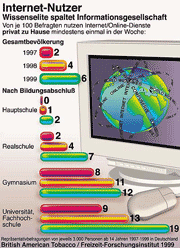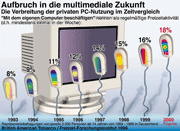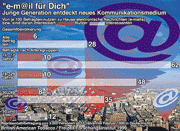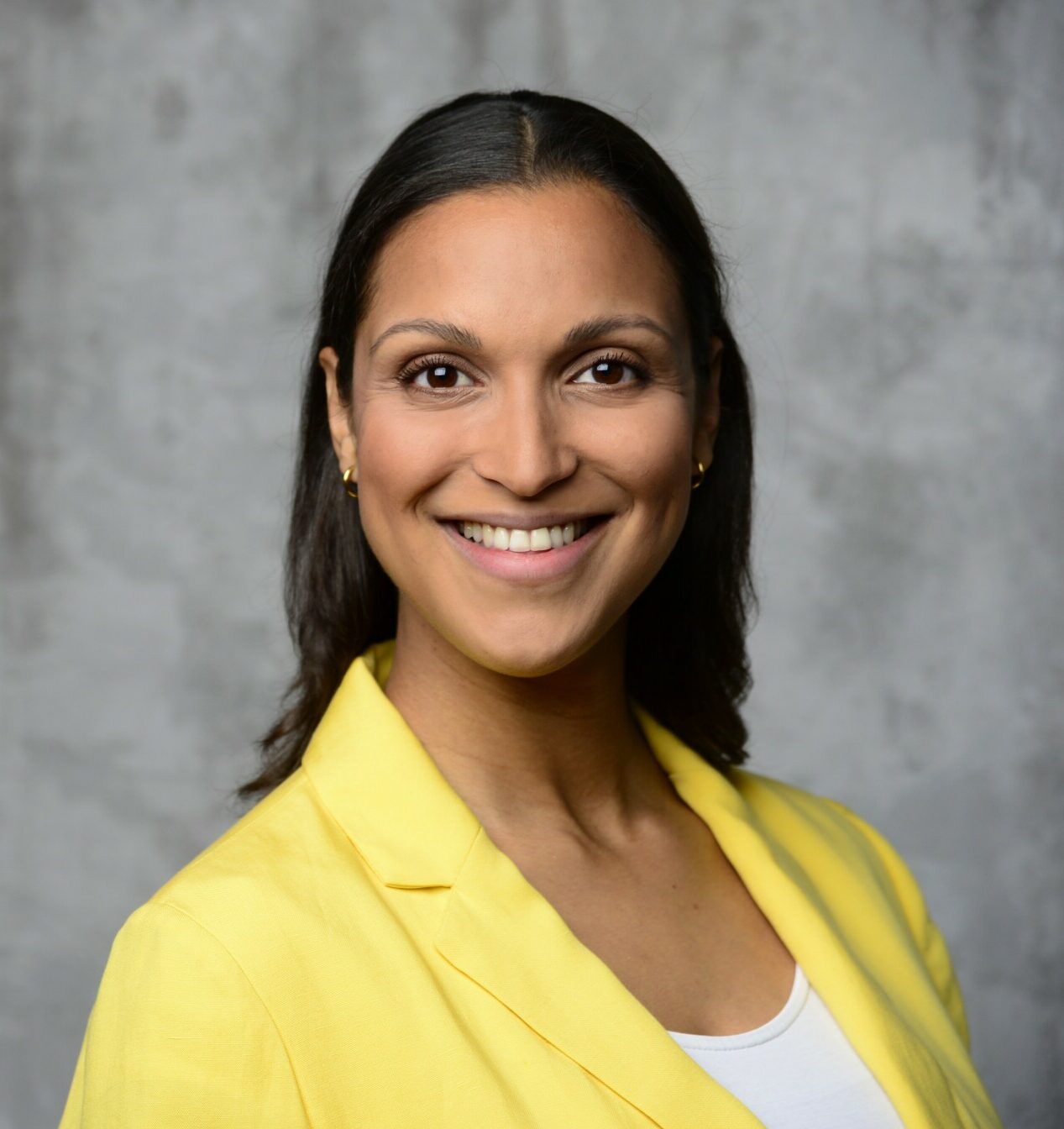Knowledge elite divides information society
Are secondary school students being left behind when it comes to using new media?
As we enter the 21st century, a new inequality threatens to divide the future information society. Those with only a lower secondary school leaving certificate (Hauptschulabschluss) are particularly at risk of being left behind when it comes to using new media. Only 6 percent of them regularly use a PC at home for private purposes. In contrast, the proportion of PC users with higher education is almost five times higher (28%). And only 2 percent of PC users with a lower secondary school leaving certificate surf the internet, while the proportion among university graduates is almost ten times higher (19%). This is according to a recent representative survey conducted by the Leisure Research Institute of British American Tobacco, in which 3,000 German citizens aged 14 and over were asked about their media habits in February 1999.
A comparison over time reveals that the proportion of internet users among those with a primary or lower secondary school leaving certificate has hardly changed in recent years (1997: 1,030 – 1998: 11,030 – 1999: 21,030), while university graduates are increasingly populating cyberspace (1997: 91,030 – 1998: 131,030 – 1999: 191,030). "A new two-tier society of media illiterates and members of a knowledge elite is emerging," says institute director Prof. Dr. Horst W. Opaschowski. "Population groups with lower levels of formal education remain largely excluded from the dawn of the multimedia age or are even cut off. The new opportunities of the information society are being utilized almost exclusively by the highly educated.""
If we don't soon succeed in connecting all general education schools to the internet to equip students for the media age, Germany's information society will split into "users" and "losers," into those who utilize the technology and those who are left behind. Only the more highly educated classes can currently prepare themselves for the 21st century on their own. Everyone else risks stagnating in their media literacy. Via TV and video, they consume only what is easy and convenient to use, interesting, and entertaining. Professor Opaschowski: "A kind of Kaspar Hauser syndrome is setting in. While the media industry is constantly increasing the technological demands on users, many consumers are in danger of stagnating in their development." In the end, they resign themselves to the situation or refuse to engage. Thus, consumers' skills are lagging significantly behind the possibilities of technological development.
Two solutions to this dilemma present themselves: Promote the development of new technical systems that are so easy to use that anyone can operate them. And: Invest more in new learning programs that aim to produce competent media users.
""Email for you".
Younger generation discovers new communication medium
Meg Ryan and Tom Hanks make the hearts of the younger generation beat faster: First dates and new contacts are just a click away: Email is becoming a communication exchange. It's replacing traditional letter writing and making it possible to meet like-minded people. However, there's still a wide gap between desire and reality. Only 10 percent of 14- to 29-year-olds receive emails frequently, while 51 percent eagerly await them. "A mega-market is emerging here," says Professor Opaschowski. "For every young email user, there are five interested parties." In the 14- to 17-year-old age group, almost two-thirds (62%) are interested. A year earlier, it was only 47 percent.
The shift to email could develop into a new youth culture with extraordinary growth rates. Email is a medium that enables individualization but also doesn't preclude anonymity. Here, young people can build new networks of relationships without having to make long-term commitments. "Email contacts are more like a temporary alliance that replaces lasting relationships," says Professor Opaschowski. "The PC becomes a virtual meeting place where even shy people can chat without eye contact and without losing face.""
Among regular users of email, male contacts are significantly overrepresented: For every female emailer (41%), there are two male emailers (81%). The explanation is simple: Shortly before the turn of the millennium, 52 percent of young men aged 14 to 29 owned their own computer, compared to only 38 percent of young women. There is still a long way to go before the PC is accepted as a mass medium – like mobile phones and television – so that in the future it will no longer just be "email for you," but also "email for me.""





